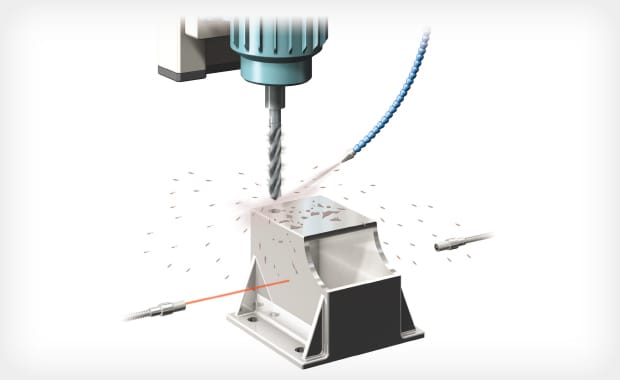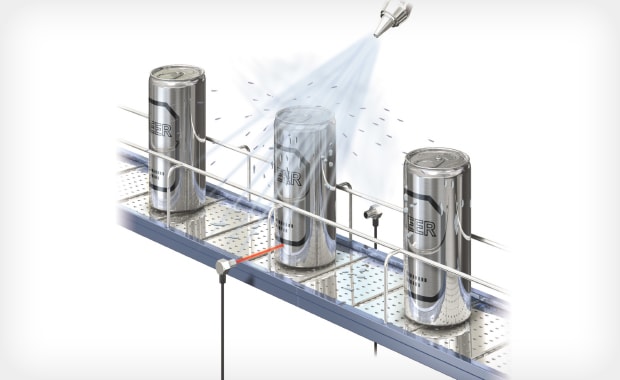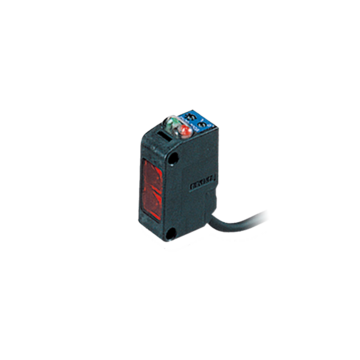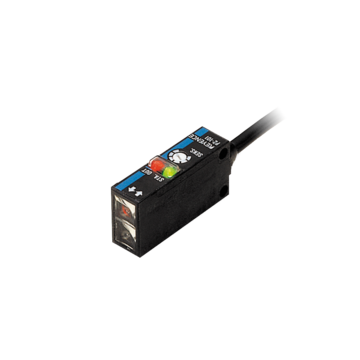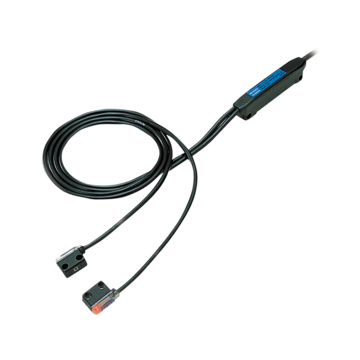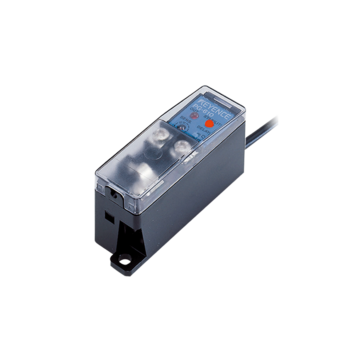Photoelectric Sensors
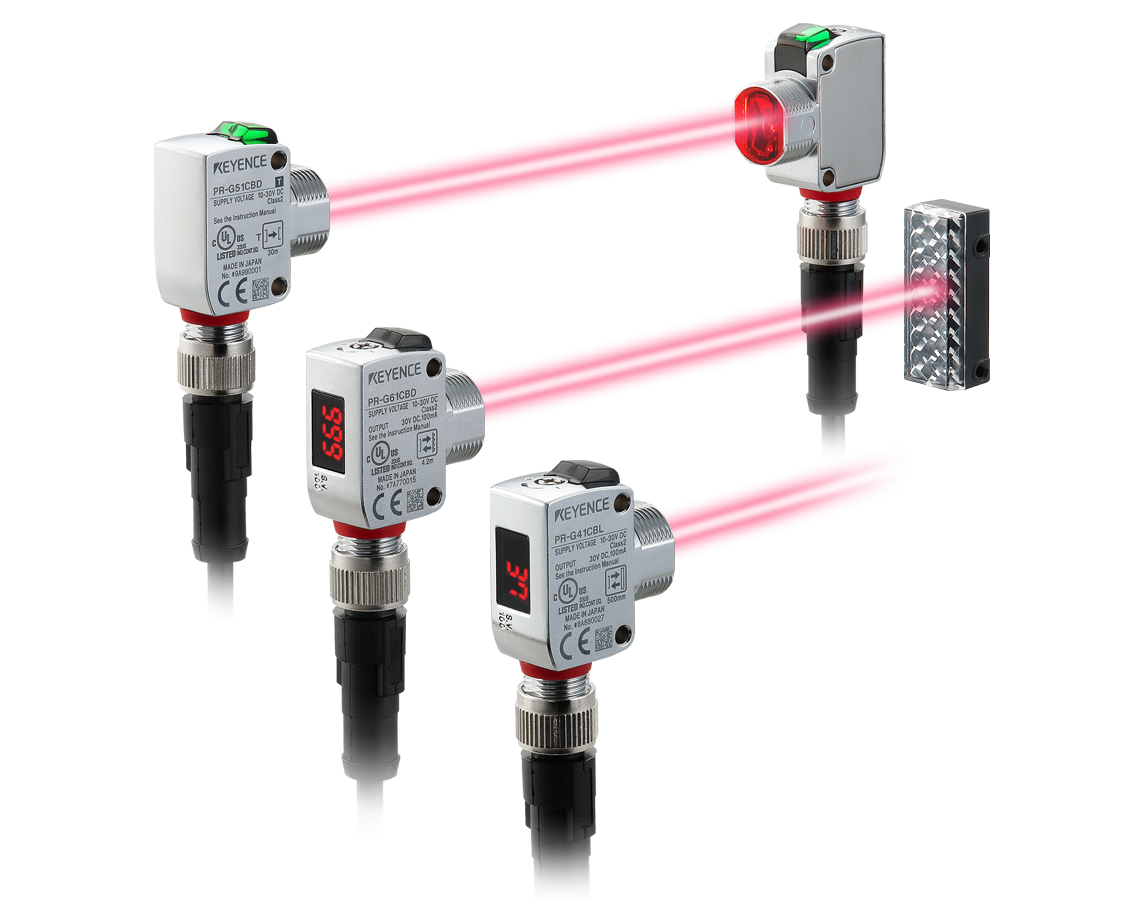
Photoelectric sensors utilize light intensity-based detection principles to detect target presence/absence. There are several different types of photoelectric sensors, including reflective, retro-reflective, and thru-beam models. Photoelectric sensors offer a variety of benefits, including durability, application versatility, ease-of-use, and low cost.
Product Lineup : Photoelectric Sensors
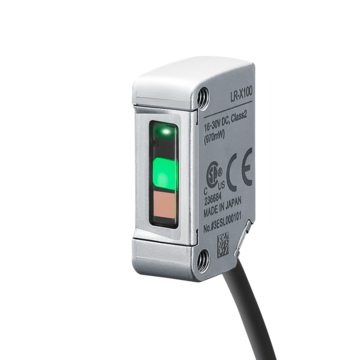
The LR-X Series is a remarkably small laser sensor capable of detecting targets based on position and is unaffected by color, surface finish, or shape. Impressive durability is achieved with its food-grade stainles steel housing (SUS316L), high IP ratings, and guarded cable. Position changes as small as 0.5 mm (0.02 inch) are possible, along with automatic and real-time intensity adjustment to ensure stable detection on any target.
Features
Compact & Robust Design for Use Anywhere
Whether building a new machine or retrofitting an older one, the ultra-compact size of the LR-X Series makes it easy to integrate into any space. The metal housing and rugged design also ensure it will last in any environment.
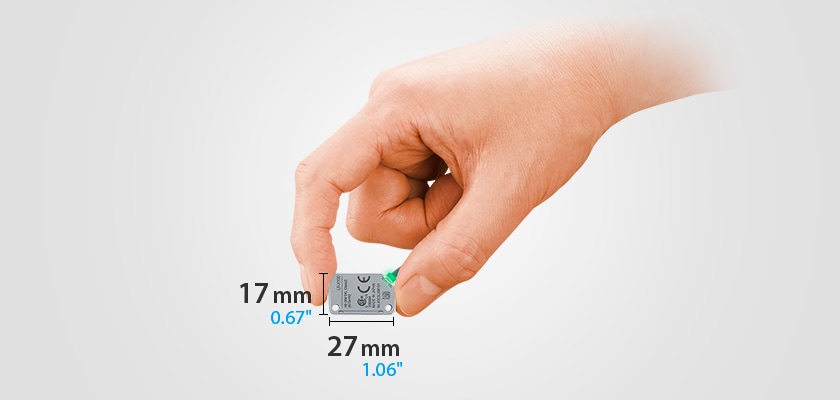
Stable Detection of Any Target
Minimum Detectable Position Change: 0.5 mm 0.02"
The LR-X Series detects targets based on position, not light intensity. This allows for stable detection of targets regardless of color, surface finish, or shape. This allows the LR-X Series to be used in a wide variety of applications, including those with small position changes.
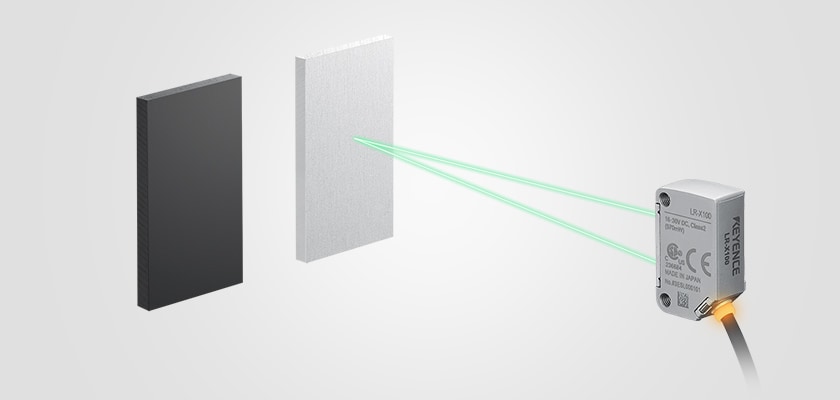
Shiny Metals
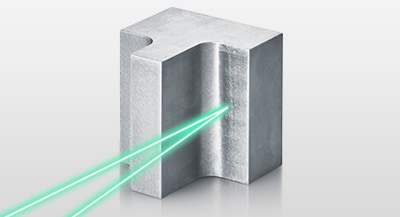
Rounded Surfaces
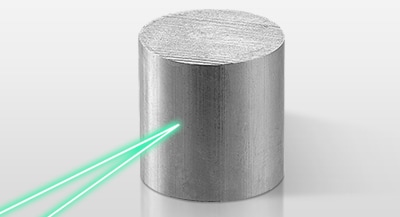
Black/Dark Targets
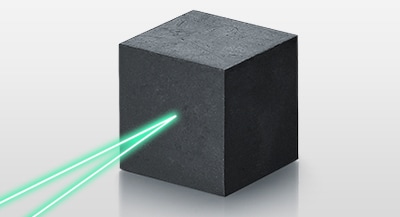
Varied Colors
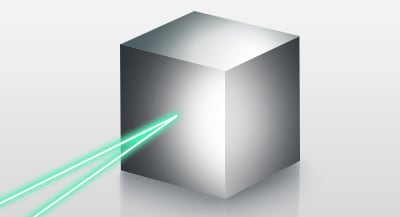
Angled Targets
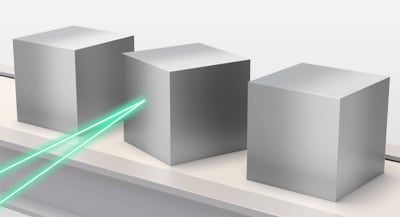
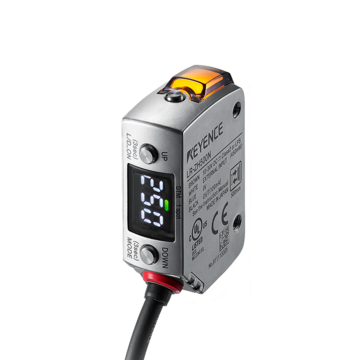
The LR-Z Series is capable of detecting objects based on position or contrast, allowing it to reliably detect metal targets, dark targets, transparent targets, contrast changes, etc. The series is housed in a rugged metal body and offers a simple one button teach. It has a range of up to 500mm (19.69") and offers hard wired, M8 connector, and M12 connector cable options.
Features
Best Detection Ability in its Class
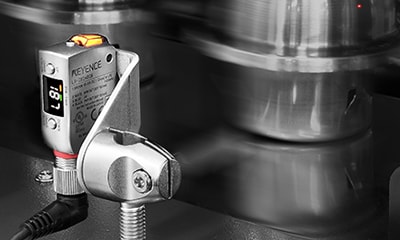
The LR-Z's unique U.C.D. Function allows for stable detection of clear, metallic, or dark targets. This series can also detect purely based on distance, regardless of shape, color, or surface finish.
Durable & Long Life
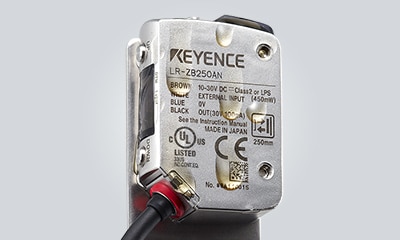
The IP68/69K rating means the LR-Z is ready for the roughest of factory environments. Wash-down, oil spray, and many corrosives are no match for the stainless steel body. Additionally, physical impact or even overtightening are not a concern because of the highly durable design.
Simplified Operation
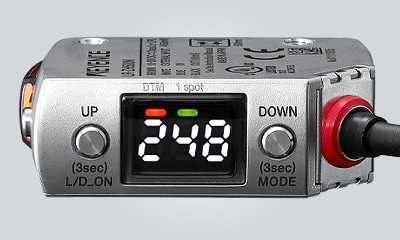
Simple setup and easy operation are at the core of the LR-Z's design. With a simple 1-touch teach, calibrating this sensor is straightforward and quick. A highly visible indicator and a 7-segment display make this sensor very easy to use.
New feature U.C.D. Function Distinguishing a Target From a Background Using the Distance and Received Light
The sensor first registers the distance to the background and the received light, which are used as reference, and then detects the target by sensing that the distance or received light differs from the registered reference when a target comes into the detection area. With the background, stable detection of target is ensured even if the target is a complex shaped object, has changes in color and surface condition, or is a thin object with a small height difference.
Without Target
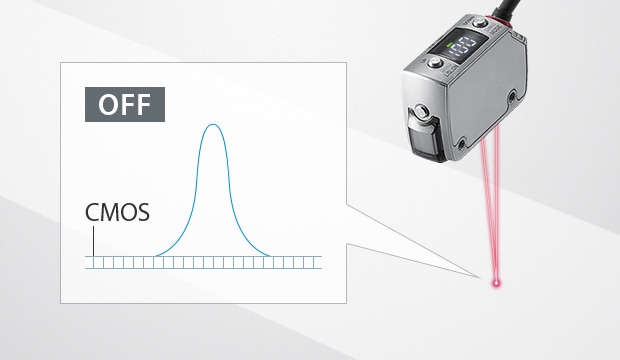
With Target
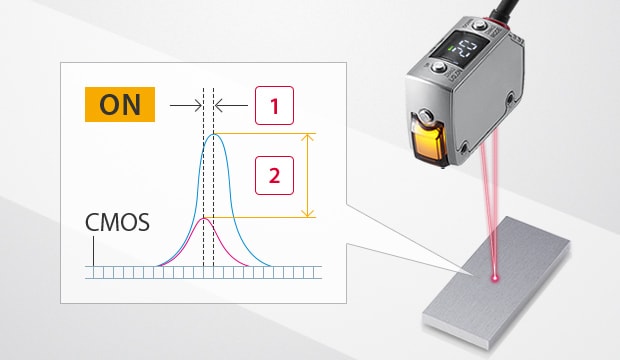
-
1Difference in distance
-
2Difference in received light
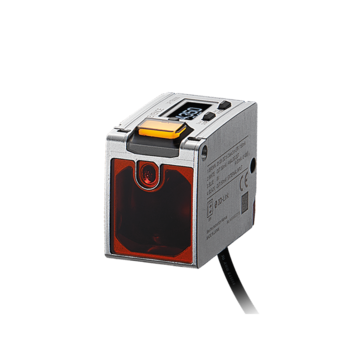
The LR-T Series detects objects based on position and offers extended range to allow for flexible mounting. It is housed in a rugged metal housing, has a simple one button teach and is unaffected by color, surface finish or angle. This series has a range of up to 5m (16.4') and offers hard wired and M12 connector cable options.
Features
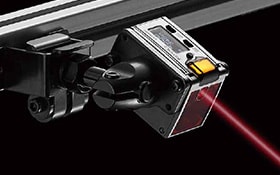
Superior Detection Capabilities
The LR-T is designed to detect at long ranges while remaining highly stable. This is achieved due to the HS2 technology used, a combination of Time of Flight detection and a custom integrated circuit. Additionally, the interference prevention and Datum Function allow users to maximize this sensors capability in any situation.
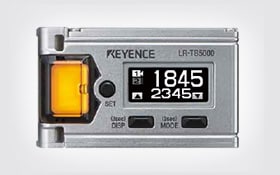
Easy to Use
The LR-T Series is simple to install and calibrate. Flexible mounting options, a visible beam spot, push button teach, and an easy to read display allow for quick setup. Even at long distances, constant feedback is provided with the LR-T's highly visible status indicator.
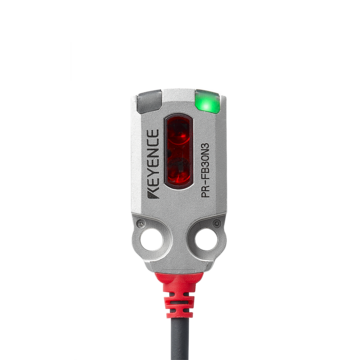
The PR-M/F Series is the smallest metal photoeye in its class with an SUS316L stainless housing and offers both thrubeam and reflective options. Each model features a fixed field, meaning no calibration is required. This series has a range of up to 1.2m (3.94') and offers hard wired and M8 connector cable options.
Features
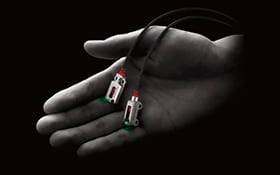
Durable and Long Life
The “hybrid structure” of the PR-M/F features an SUS316L stainless steel body that is also resin filled. The NEMA and IP rated enclosure means these units are highly resistant to oils, acids, and even alkaline detergents.
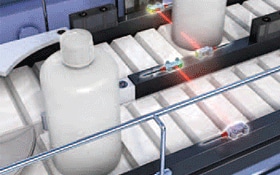
Stable Operation
The PR-M/F Series is designed with Background Suppression and Automatic Cross Talk Prevention to provide highly stable detection. External light or movement will not interfere with the sensor.
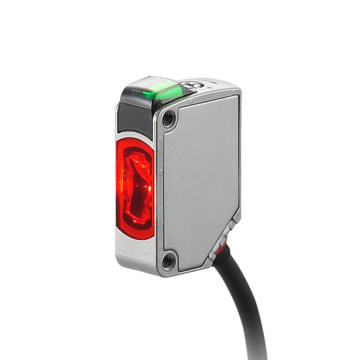
Features
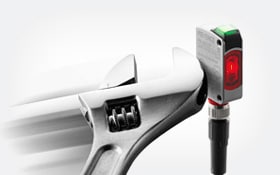
New Standard for Photoelectric Sensors
KEYENCE is known for durable sensors and PR-G is one of the most durable.

High Power
The PR-G Series has options powerful enough to blast 30m (98.4'). This power also benefits shorter range applications by being able to blast through dust, dirt, oil, etc.
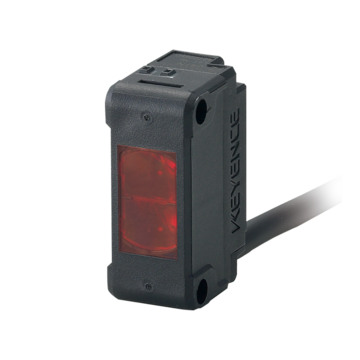
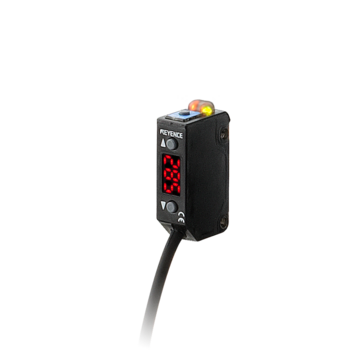
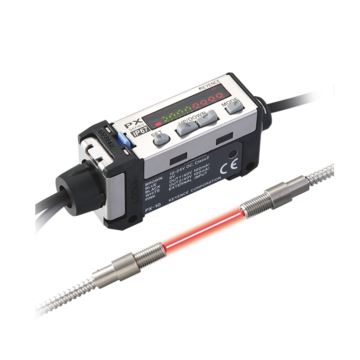
Features
Water-resistant and Oil-resistant IP68G/IP69K Structure
Outstanding resistance to harsh environments thanks to the new "vacuum packed" structure
The sensing heads are completely backfilled under vacuum with transparent epoxy resin. This ensures maximum adhesion with the cable and lens, and eliminates the risk of liquid penetration.
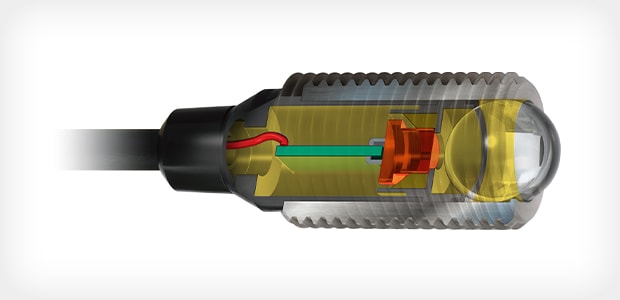
Impressive Thrubeam Strength
High-power MEGA mode
Using the high power MEGA mode, the PX family can operate reliably up to 40 m (131.2'). In addition to long distance detection, the high power of the PX easily penetrates oil, grease, dust, dirt and other obstructions.
Confirming constant presence of an engine block
Detection of products in a rinsing process
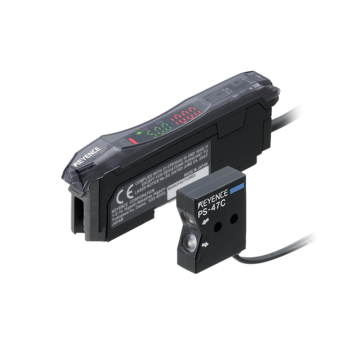
Features
Sensitivity Setup and Display Standardization at the Touch of a Button
Easy configuration
By standardizing the received light intensity display of multiple sensors to “100” and “0”, it is easy to tell where an error has occurred because the sensor will not return to the original display value of “100” or “0”.
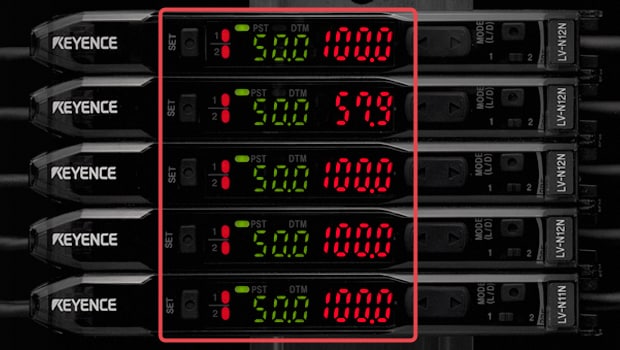
The sensor where the error occurred is identifiable at a glance.
Electric Wire Cable Allows for Rejoining
Because the sensor head cable is a simple power cable, it can be extended to the desired length. By soldering or using a metal connector, it can be extended to a maximum of 10 m (32.81').
Joining fiberoptic sensors
The light intensity is attenuated by approximately 90% at the joining surface.
With the PS-NEO, no light attenuation occurs even when cables are rejoined.
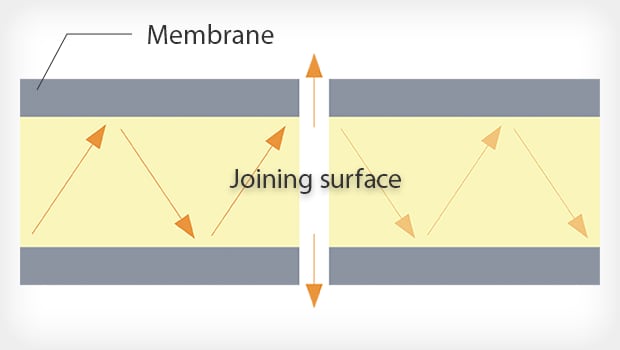
Discontinued Series
-
Amplifier Separate Type Photoelectric Sensor
PS-T series
Discontinued
-
Amplifier Separate Type Photoelectric Sensor
PS series
Discontinued
-
Multi-voltage power supply,built-in amp.photoelectric sensors
PW series
Discontinued
-
Built-in amplifier photoelectric sensors
PZ series
Discontinued
-
Fixed-distance photoelectric sensor
PK series
Discontinued
Product Lineup : Color Sensors
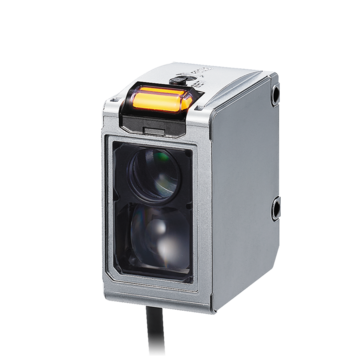
The LR-W Series can detect any difference in appearance (including color) and is in a durable metal housing. It has one touch calibration and can store up to 16 colors with an optional controller. This series has a range of up to 500mm (19.69") and offers hard wired and M12 connector cable options.
Features
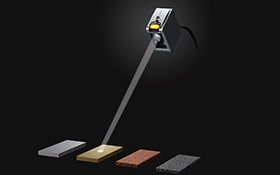
Innovative Technology
The unique technology in the LR-W series allows it to analyze the full light spectrum. This series can detect everything from surface finish differences to color changes that are hard to see with the naked eye.
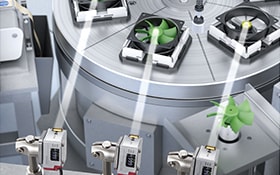
Flexibility
There are three distinct sensors in the LR-W family. With specialties ranging from general purpose, complex targets, or fiberoptic integration, this series solves problems, not just applications.
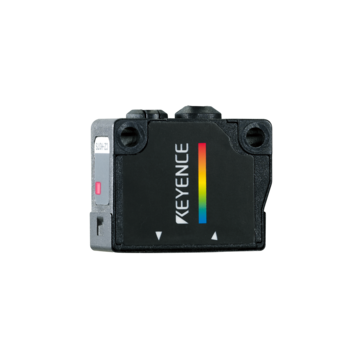
Features
Detect only specified differences in appearance
The CZ-V20 Series uses a completely different detection principle than other photoelectric sensors. This allows for incredibly stable, high-accuracy color confirmation and detection of luster, fluorescence/UV. Each of which are often unstable with conventional photoelectric sensors.
General-purpose photoelectric sensors
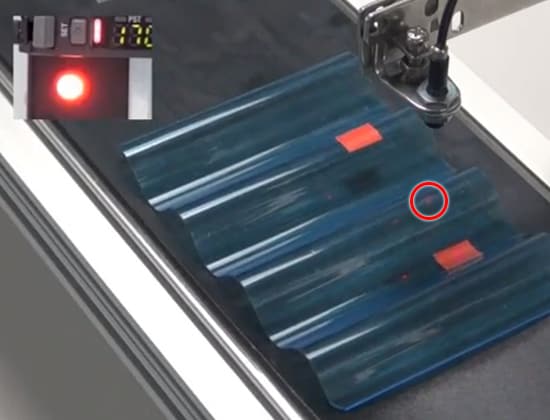
False-detection of areas that are not red
CZ-V20 Series
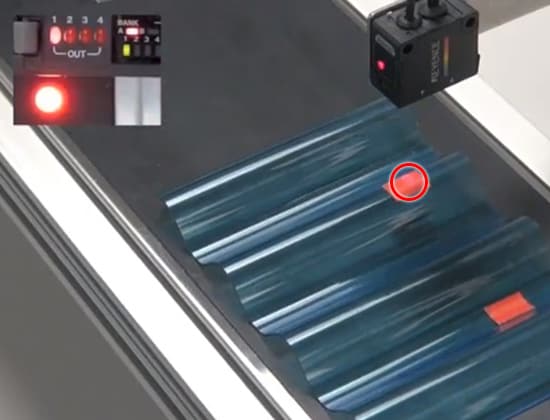
Detection of red areas only
Detect slight color differences not easily recognized
The CZ-V20 Series enables high-accuracy color differentiation with the ability to save up to 8 targets.
Color difference detected
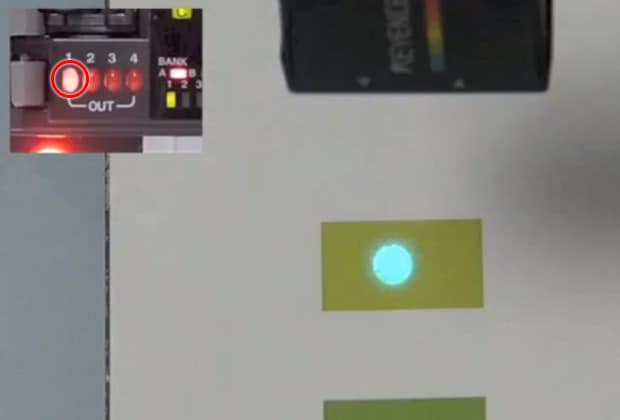
No color difference detected
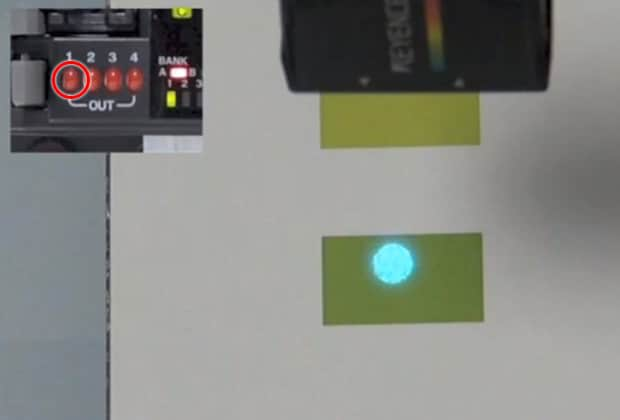
Discontinued Series
Product Lineup : Pattern Matching Sensor
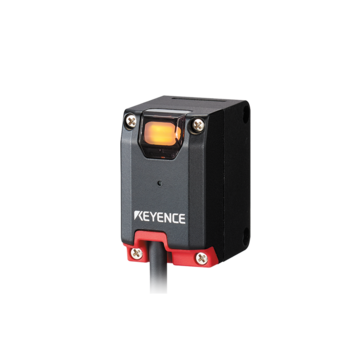
The AI Series detects targets over an area when position is not fixed, reflection is unstable, or to differentiate products. By covering an area, targets that are misaligned or rotated can be easily detected. This series has a range of up to 160mm (6.30") and offers hard wired and M8 connector cable options.
Features
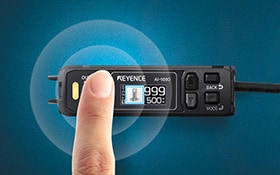
Stable Detection Where Conventional Sensors Struggle
The AI uses images to determine good parts from bad. After an image is registered, the target's brightness and shape are used to automatically determine which target features should be inspected during operation. This image-based method provides stable detection of targets that are difficult to handle when using conventional sensors with light intensity-based detection.
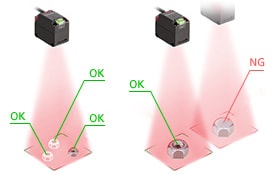
Support for Various Applications
The AI Series can be used for a wide variety of applications. Examples include spring presence, label misalignment, screw tap presence, capacitor direction determination, and felt presence. In addition, the AI Series is capable of performing these detections over an area, which prevents errors due to variations in position or vibrations of targets.
A beam of light is emitted from the light emitting element and is received by the light receiving element.
Type 1 - Reflective Models
Both the light emitting and light receiving elements are contained in a single housing. The sensor receives the light reflected from the target.
Detection occurs when the light beam, emitted to the target, is reflected by the target and received.
Space-saving (requires installation of sensor unit only)
Adjustment of optical axis not required
Reflective transparent objects detectable
Color differentiation possible
Type 2 - Thrubeam Models
The transmitter and receiver are separated. When the target is between the transmitter and receiver, the light is interrupted.
Detection occurs when the target crosses the optical axis between the photoelectric sensor's transmitter and receiver.
Long-detecting distance
Stable detecting position
Opaque objects detectable regardless of shape, color or material
Powerful beam
Type 3 - Retroreflective Models
Both the light emitting and light receiving elements are contained in same housing. The light from the emitting element hits the reflector and returns to the light receiving element. When a target is present, the light is interrupted.
Detection occurs when the target crosses the optical axis between sensor head and reflector.
Reflector allows installation in a limited space
Simple wiring
Longer detecting distance than the diffuse-reflective sensor type
Easily-adjustable optical axis
Opaque objects detectable regardless of shape, color, or material
Frequently Asked Questions About Photoelectric Sensors
A photoelectric sensor emits a light beam (visible or infrared) from its light-emitting element. A reflective-type photoelectric sensor is used to detect the light beam reflected from the target. A thrubeam type sensor is used to measure the change in light quantity caused by the target crossing the optical axis.

